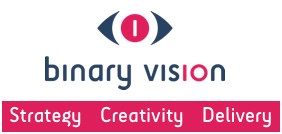About your users
We work with our clients in an iterative, agile manner, emphasising the importance of regular testing with real users to deliver effective and usable digital services. Our objective is to marry what truly works for users with your organisation’s key goals.
User experience design (UXD) method: Lean UX
Our favoured approach – Lean UX – is superbly suited to web development. It blends ideas from the Lean Startup movement, design thinking and agile development.
Following the Lean UX model, our team rapidly brainstorm, prototype and then validate ideas, testing with real users and customers in a series of short iterations, with an emphasis on continuous improvement, tangible outputs and validated, evidence-based delivery.
For these user research cycles we pick from a range of techniques, for instance:
- Observational user research (e.g. testing top user tasks against an early version of the site or service), usually done in a user research lab at Binary Vision.
- Opportunistic ‘guerilla’ testing. We take our testing to where your users are. For instance at a recent CBI conference we were able to test proposed site features and mobile navigation with over 40 attendees.
- Remote online testing, usually with both a voice link and a shared desktop.
Being truly accessible
True accessibility should be more than just checking off a requirements list. It should be about delivering inclusivity; giving the right of access to your site to all in society.
We know this website isn’t currently very accessible (sorry), but we can and do deliver to the highest accessibility standards for our clients – see for instance this BV case study on Jewish Care Interact.
Inclusive user research and design
We believe that the very best accessibility is part of a wider inclusive design process. So where possible we perform user research with Assistive Technology (AT) users and with other users who too often get ignored, such as older people and those with mental health issues or cognitive impairment. It’s not just to audit the site’s accessibility but an important (and usually forgotten) part of really effective user experience design (UXD).
This inclusive approach to user research and design has worked incredibly well for us and our clients; it ensures a simple, more usable experience for all.
Advanced accessibility
Good accessibility is also about getting the implementation right. Over many years now (and intensely over this last year) we’ve been working hard to deliver Advanced Accessibility that picks up where the WCAG (Web Content Accessibility Guidelines) left off, taking full advantage of the latest technology – for instance:
- to encompass mobile devices, both responsive accessible design, and exploiting the opportunities provided for by touch and voice
- enhanced page elements with WAI-ARIA attributes to provide more information for assistive devices
“You have gone that extra mile for us in terms of making the site as accessible as possible for those with special needs, including people with learning difficulties and those with visual impairments, for which we are especially grateful.”
